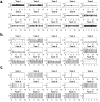A pilot study of nocturnal temporalis muscle activity in TMD diagnostic groups of women
- PMID: 28449265
- PMCID: PMC5499232
- DOI: 10.1111/joor.12517
A pilot study of nocturnal temporalis muscle activity in TMD diagnostic groups of women
Abstract
Temporomandibular disorder (TMD) incidences are believed to be related to parafunctional behaviours like teeth clenching. This pilot study aimed to (i) develop an automated clench-detection algorithm, and (ii) apply the algorithm to test for differences in nocturnal clenching in women with and without TMD. Subjects gave informed consent to participate. Adult women were categorised using Diagnostic Criteria for TMD according to presence/absence (+/-) of both TM joint disc placement (DD) and chronic pain (P) into two groups (+DD+P, -DD-P) with 12 subjects each. Surface temporalis electromyography was recorded during oral tasks performed by subjects at two laboratory sessions. The data were used to characterise muscle activity per N of bite force (μV/N) for each subject, develop the clench-detection algorithm and test its accuracy. Ambulatory surface temporalis electromyography was self-recorded by each subject over three nights and analysed using the algorithm and bite force (N) versus muscle activity μV/N calibrations. Bonferroni-adjusted homoscedastic t-tests assessed for significant between-group differences in clenching (P < 0·05). Sensitivity, specificity and accuracy of algorithm-detected laboratory clenches were all ≥96%. During self-recordings 95% of clenches had durations of <4 s and peak forces of <10 N in both groups. Mean clench durations were significantly longer (P = 0·042) in +DD+P (1·9 ± 0·8 s) than -DD-P subjects (1·4 ± 0·4 s). Mean temporalis duty factors (%clench time/total recording time) were significantly larger (P = 0·041) in +DD+P (0·47 ± 0·34%) than -DD-P (0·26 ±0·22%) subjects. Nocturnal temporalis muscle activities detected by a validated algorithm were longer per clench and recording time in +DD+P compared to -DD-P women.
Keywords: electromyography; masticatory muscles; pattern recognition; sleep bruxism; temporomandibular joint disorders; women.
© 2017 John Wiley & Sons Ltd.
Figures



Similar articles
-
A pilot study of ambulatory masticatory muscle activities in temporomandibular joint disorders diagnostic groups.Orthod Craniofac Res. 2015 Apr;18 Suppl 1(0 1):146-55. doi: 10.1111/ocr.12085. Orthod Craniofac Res. 2015. PMID: 25865543 Free PMC article.
-
Mechanobehavioral Scores in Women with and without TMJ Disc Displacement.J Dent Res. 2017 Jul;96(8):895-901. doi: 10.1177/0022034517704375. Epub 2017 Apr 17. J Dent Res. 2017. PMID: 28414608 Free PMC article.
-
Infield masticatory muscle activity in subjects with pain-related temporomandibular disorders diagnoses.Orthod Craniofac Res. 2015 Apr;18 Suppl 1(0 1):137-45. doi: 10.1111/ocr.12077. Orthod Craniofac Res. 2015. PMID: 25865542 Free PMC article.
-
Surface EMG of the masticatory muscles (Part 3): Impact of changes to the dynamic occlusion.Int J Comput Dent. 2013;16(2):119-23. Int J Comput Dent. 2013. PMID: 23930574 Review. English, German.
-
Surface electromyography in orthodontics - a literature review.Med Sci Monit. 2013 May 31;19:416-23. doi: 10.12659/MSM.883927. Med Sci Monit. 2013. PMID: 23722255 Free PMC article. Review.
Cited by
-
Mechanobehavior and mandibular ramus length in different facial phenotypes.Angle Orthod. 2020 Nov 1;90(6):866-872. doi: 10.2319/032420-217.1. Angle Orthod. 2020. PMID: 33378519 Free PMC article.
-
Mechanobehavior and Ontogenesis of the Temporomandibular Joint.J Dent Res. 2018 Oct;97(11):1185-1192. doi: 10.1177/0022034518786469. Epub 2018 Jul 13. J Dent Res. 2018. PMID: 30004817 Free PMC article. Review.
-
Mechanics- and Behavior-Related Temporomandibular Joint Differences.J Dent Res. 2024 Oct;103(11):1083-1090. doi: 10.1177/00220345241265670. Epub 2024 Sep 14. J Dent Res. 2024. PMID: 39275985
-
The association between sleep bruxism and awake bruxism: Polysomnographic and electromyographic recordings in women with and without myofascial pain.J Oral Rehabil. 2023 Sep;50(9):822-829. doi: 10.1111/joor.13468. Epub 2023 Apr 26. J Oral Rehabil. 2023. PMID: 37073471 Free PMC article.
-
Association between masticatory muscle activity and oral conditions in young female college students.Anat Cell Biol. 2021 Dec 31;54(4):479-488. doi: 10.5115/acb.21.107. Anat Cell Biol. 2021. PMID: 34552039 Free PMC article.
References
-
- Blanco Aguilera A, Gonzalez Lopez L, Blanco Aguilera E, De la Hoz Aizpurua JL, Rodriguez Torronteras A, Segura Saint-Gerons R, et al. Relationship between self-reported sleep bruxism and pain in patients with temporomandibular disorders. Journal of oral rehabilitation. 2014;41:564–572. - PubMed
-
- Fujisawa M, Kanemura K, Tanabe N, Gohdo Y, Watanabe A, Iizuka T, et al. Determination of daytime clenching events in subjects with and without self-reported clenching. Journal of oral rehabilitation. 2013;40:731–736. - PubMed
-
- Lavigne GJ, Rompre PH, Poirier G, Huard H, Kato T, Montplaisir JY. Rhythmic masticatory muscle activity during sleep in humans. Journal of dental research. 2001;80:443–448. - PubMed
Publication types
MeSH terms
Grants and funding
LinkOut - more resources
Full Text Sources
Other Literature Sources
Medical

